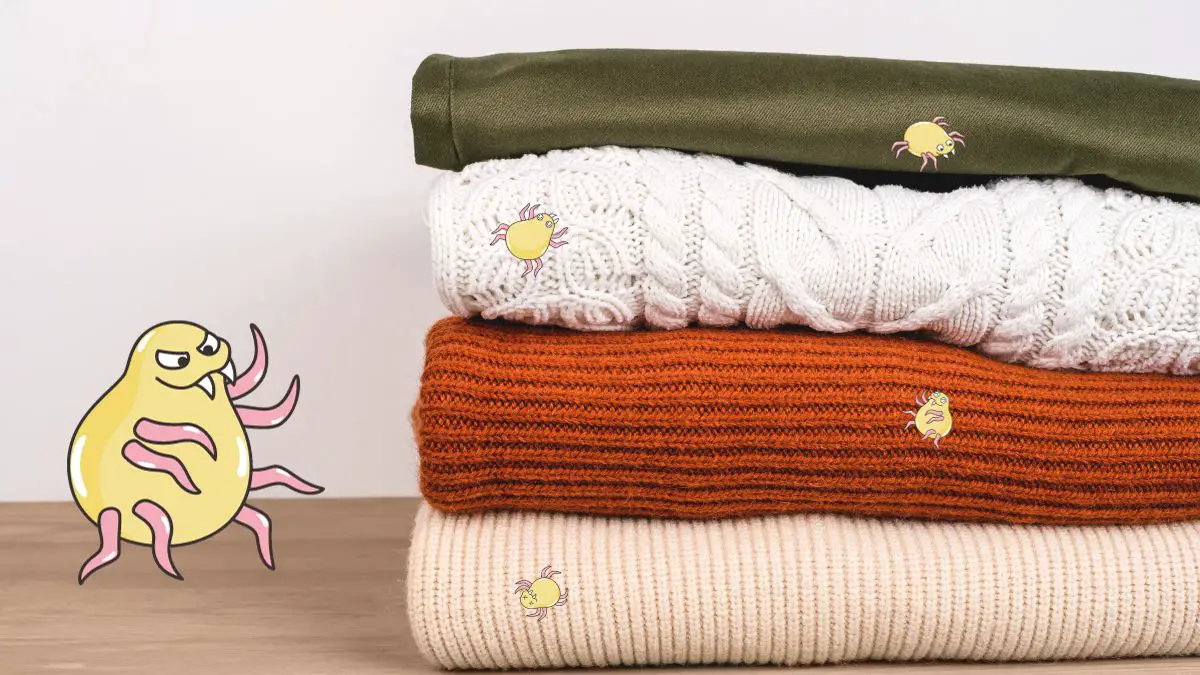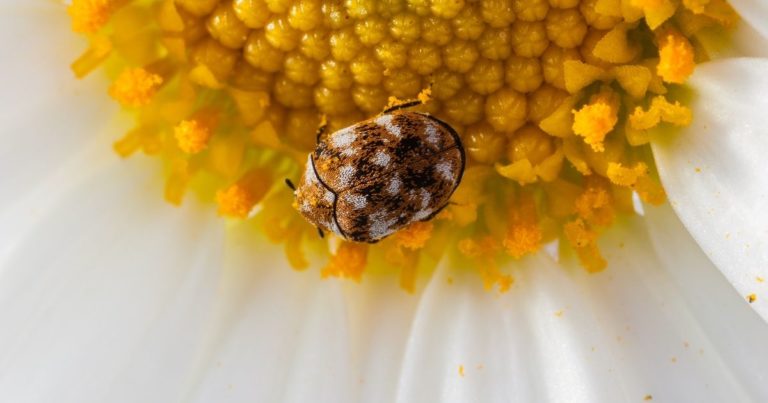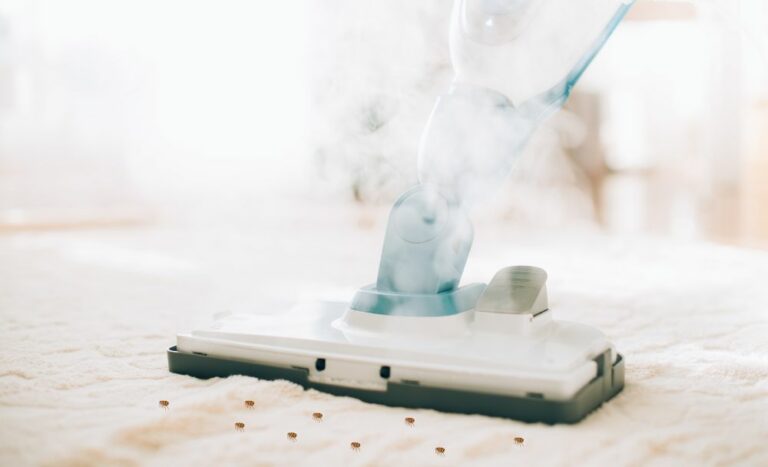How to Get Rid of Dust Mites in Clothes: Proven Strategies for a Mite-Free Wardrobe

Dust mites are tiny creatures that thrive in warm and humid environments, often making their home in the fibers of your clothing, bedding, and upholstery. While invisible to the naked eye, the allergens produced from their waste can cause symptoms for those with dust mite allergies, ranging from sneezing and itching to more severe reactions.
In this post, I’ll explore how to get rid of dust mites in clothes. From using your clothing steamer to washing, drying, sunlight exposure, laundry additives, and essential oils.
Do Dust Mites Live in Clothes?
Dust mites can live in clothes, particularly those not washed regularly, like winter clothing, including hats, jackets, and sweaters. They thrive in environments where they can absorb moisture from the air and can be found in various fabrics around the home.
Characteristics of Dust Mites
Dust mites are microscopic arachnids not visible to the naked eye. They thrive in warm and humid environments and feed on the dead skin cells humans shed. Their size ranges from 0.2 to 0.3 millimeters, which allows them to reside within the fibers of various fabrics, including those used for clothing. Their diminutive size and translucent bodies make them difficult to detect without magnification.
Common Habitats for Dust Mites in Homes
While dust mites commonly infest bedding and upholstery, they can also live in your clothing, especially if stored in dark, moist areas like closets or laundry hampers. Regular laundering of clothing in hot water can effectively kill dust mites.
Clothes left unwashed or stored for long periods provide a suitable environment for mites to settle and multiply. Keeping clothes dry and clean is beneficial to reduce favorable conditions for dust mites in the wash.
Effective Cleaning Techniques

To effectively eliminate dust mites from your clothing, you’ll want to use methods that apply intense heat or cold to kill these allergens.
Using a Clothing Steamer
A clothing steamer is a non-wash method that can kill dust mites with high-temperature steam. Run the steamer slowly over your clothes, ensuring each section receives adequate heat. The good thing about clothing steamers is they are safe for most fabrics, including those that cannot be washed in hot water.
If you don’t have a clothes steamer, you can use a steam cleaner to kill dust mites.
Hot Water Washing
For items that can withstand high temperatures, washing in hot water at 130°F or above is ideal to kill dust mites. Use this setting weekly to maintain a mite-free wardrobe.
Freezing Items
Place delicate items that can’t be washed in a plastic bag and freeze for 24 hours. While freezing won’t remove allergens, it is effective at killing mites.
Dryer Heat Exposure
If washing in hot water is not an option, you can kill mites by placing items in the dryer for at least 15 minutes at a temperature above 130°F. Combine this with a cold wash to clean your clothing.
Preventative Measures

Minimizing dust mite populations in your clothing involves several targeted strategies. The section below outlines essential steps to keep these allergens at bay.
Using Dust Mite-Proof Covers
Invest in dust mite-proof covers for your mattresses and pillows. These specialized covers are designed with tightly woven fabric that prevents dust mites from colonizing or escaping your bedding. Remember to choose covers labeled “dust mite-proof” to ensure effectiveness.
Maintaining Low Humidity Levels
Dust mites thrive in environments with high humidity. Maintaining indoor humidity levels below 50% can significantly hinder their ability to reproduce. Use hygrometers to monitor your home’s humidity, and consider using a dehumidifier in damper areas.
Regular Vacuuming and Dusting
Make it a habit to vacuum and dust your home regularly, particularly areas where textiles are abundant. Use a vacuum cleaner with a HEPA filter to trap dust mites effectively and reduce their numbers. For the best results, vacuum at least once a week and follow up with a damp cloth to pick up any remaining dust.
Frequently Asked Questions

In tackling the issue of dust mites in clothing, you may have several questions about the most effective ways to reduce or eliminate these allergens. Here are some specific answers to this topic’s most commonly asked questions.
Which laundry detergents are best for killing dust mites?
The best selling laundry additives for killing dust mites are DeMite Laundry Additive and Premo Laundry Additive. You use these additives with your usual laundry detergent.
Do essential oils help with dust mites?
Add ten drops of essential oil to your wash cycle to help eradicate dust mites. Eucalyptus, peppermint, tea tree, and lavender essential oils are all excellent choices.
Does hanging clothes in the sun kill dust mites?
Exposing clothing to direct sunlight can help reduce dust mite populations. Ultraviolet light from the sun is a natural disinfectant and can kill dust mites in your garments.
Can you get dust mites in stored clothes?
Dust mites can thrive in stored clothing, particularly if the area is humid and not frequently disturbed. Store clothes in dry, airtight containers to prevent infestation, and consider using desiccants or vacuum sealing for added protection.
Now You Know How to Get Rid of Dust Mites in Clothes
Dealing with dust mites in clothes involves washing techniques and environmental controls. Ensuring you wash your clothes in hot water eliminates dust mites, as they cannot survive temperatures above 130 to 140 degrees Fahrenheit. Using essential oils is also notable for their mite-deterring properties and can add a pleasant scent to your clothing.
Maintaining a consistent cleaning schedule helps manage dust mites. Use allergen-proof covers for pillows and mattresses, and strive for low humidity levels in your living spaces.
Regular vacuuming with a HEPA filter can significantly reduce the number of dust mites in your home. By adopting these practices, you can decrease dust mites in your clothes and create a healthier living environment.
- Can You Use a Steam Mop On Karndean Flooring? - June 19, 2024
- How To Clean Unsealed Concrete Floors - June 7, 2024
- How to Clean Stamped Concrete - June 7, 2024







